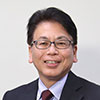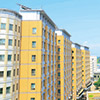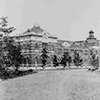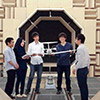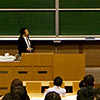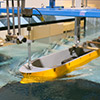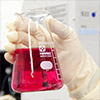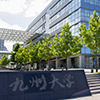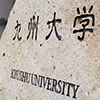Search Laboratories
Search by laboratory, faculty or keywords
- Keyword Examples
- Undergraduate
- Graduate
- Faculty
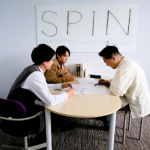
Spin Lab
- N.Yamashita(Assoc.Prof.)
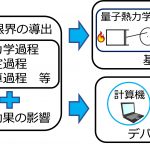
Quantum Information Lab
- H.Tajima(Assoc.Prof.)
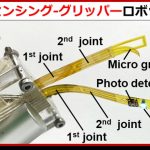
Bioinspired Microsystems
- F.Sassa(Assoc.Prof.)
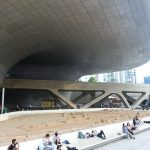
Urban Space
- E.Minoura(Assoc.Prof.)
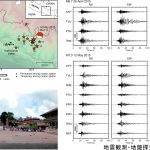
Eng. Strong motion seismology
- M.Shigefuji(Assoc.Prof.)
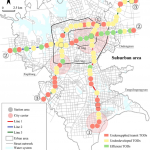
Habitat Eng.
- P.Divigalpitiya(Assoc.Prof.)
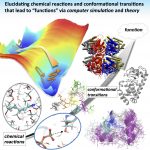
Computational Molecular Science
- T.Mori(Assoc.Prof.)
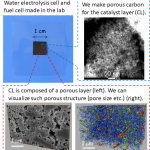
Advanced Hydrogen Energy System
- A.Hayashi(Prof.)
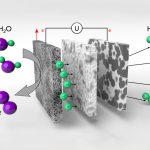
Hydrogen Production Processes
- H.Matsumoto(Prof.)
- L.Kwati(Assoc.Prof.)
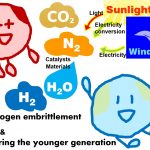
Hydrogen Structural Materials & Fracture
- M.Kubota(Prof.)
- J.Shang(Asst.Prof.)
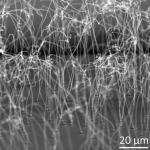
Mechanics for Material Design
- Y.Kimura(Assoc.Prof.)
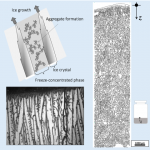
Thermal Process Eng.
- K.Nakagawa(Prof.)

Materials Informatics
- K.Kato(Prof.)
- Y.Mori(Assoc.Prof.)
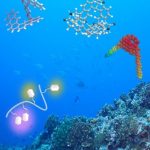
Interdisciplinary Chemistry of Functional Materials Laboratory(Institute for Materials Chemistry & Eng.)
- G.Fukuhara(Prof.)
- T.Project)(Asst.Prof.)

Integration system with novel functions
- H.Kino(Assoc.Prof.)

Inorganic materials × Deep UV Laser process
- H.YABUTA(Prof.)

Numerical Simulation of Architectural Environment
- S.Yoo(Assoc.Prof.)

Intelligence & Cultural Evolution
- E.Nakamura(Assoc.Prof.)

Artificial Intelligence in Education(AIE)
- C.YIN(Prof.)
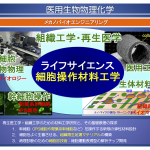
Biomedical & Biophysical Chemistry
- S.Kidoaki(Prof.)
- H.Ise(Assoc.Prof.)
- T.Kuboki(Asst.Prof.)
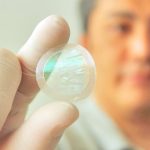
Fujikawa Laboratory
- S.Fujikawa(Prof.)
- R.SELYANCHYN(Assoc.Prof.)
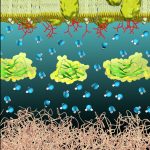
Biomaterial Eng.
- M.Tanaka(Prof.)
- T.Anada(Assoc.Prof.)
- L.Project)(Assoc.Prof.)
- S.Kobayashi(Assoc.Prof.)
- C.Iksung(Asst.Prof.)
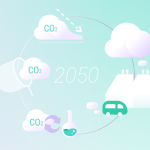
Carbon-Neutral(International Institute for Carbon-Neutral Energy Research)
- A.Staykov(Assoc.Prof.)
- T.Matsushima(Assoc.Prof.)
- M.Watanabe(Assoc.Prof.)
- J.Hyodo(Assoc.Prof.)
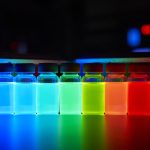
Functional Organic Chemistry (IAS)
- T.Yasuda(Prof.)
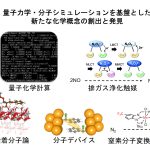
Theoretical Chemistry (Institute for Materials Chemistry & Eng.)
- Y.Shiota(Assoc.Prof.)
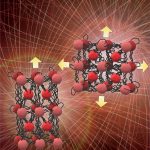
Hybrid Molecular Assemblies Laboratory(Institute for Materials Chemistry & Eng.)
- K.Kojio(Assoc.Prof.)
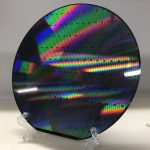
Functional device laboratory
- D.WANG(Prof.)
- K.YAMAMOTO(Assoc.Prof.)
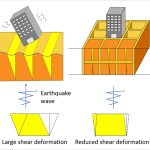
Geo-disaster Prevention Eng. Laboratory Research Group of Adaptation to Global Geo-disaster & Environment
- H.Hazarika(Prof.)
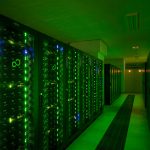
High-Performance Computing
- S.Ohshima(Assoc.Prof.)
- T.Nanri(Assoc.Prof.)

Nonlinear Physics Laboratory
- K.Morino(Assoc.Prof.)
- T.Onaga(Asst.Prof.)
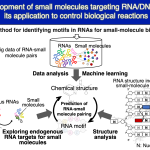
Biomolecular Function Chemistry
- A.Murata(Assoc.Prof.)
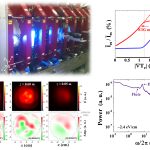
Non-equilibrium Plasma Dynamics
- C.MOON(Assoc.Prof.)
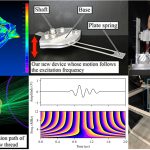
Machinery Dynamics
- T.Inoue(Prof.)
- H.Mori(Assoc.Prof.)
- K.Kurihara(Asst.Prof.)
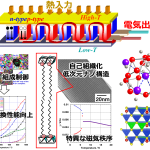
Chemistry & Physics of Functional Materials
- M.Ohataki(Prof.)
- K.Suekuni(Assoc.Prof.)
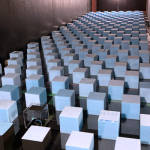
Urban Environmental Sciences
- N.Ikegaya(Prof.)
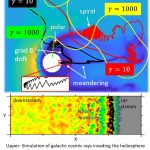
Space Environmental Fluid Dynamics
- S.Matsukiyo(Prof.)
- S.Isayama(Asst.Prof.)
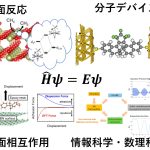
Computational Materials Science
- Y.Tsuji(Assoc.Prof.)
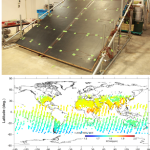
Laboratory of Material Cycle Information System
- H.Nakayama(Prof.)
- Y.Sugisaki(Asst.Prof.)
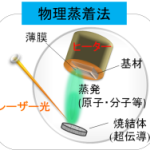
Film Materials Laboratory
- R.Teranishi(Prof.)
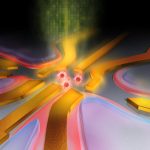
Quantum Device Eng. Laboratory
- H.Kiyama(Assoc.Prof.)
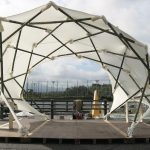
Architectural Design Laboratory
- K.SUEHIRO(Prof.)
- F.SHIWA(Asst.Prof.)
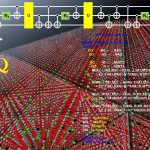
Quantum Computational Science
- T.Tada(Prof.)
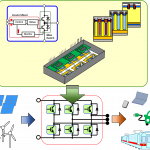
Power Device Eng.
- W.Saito(Prof.)
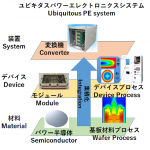
Energy Electrical Eng.
- S.Nishizawa(Prof.)
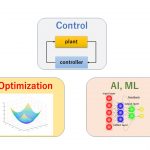
Mathematical Systems Theory Laboratory
- Y.Ebihara(Prof.)
- T.Yuno(Asst.Prof.)
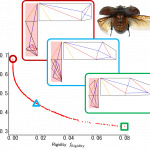
Tsumori/Tsushima Lab (Aerospace Materials & Processing)
- F.Tsumori(Prof.)
- N.Tsushima(Assoc.Prof.)
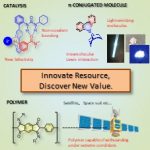
Design of Advanced Organic Compounds
- Y.Kuninobu(Prof.)
- K.Sekine(Asst.Prof.)
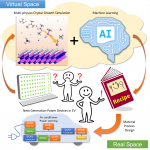
Process Design Eng.
- Y.Kangawa(Prof.)
- A.Kusaba(Asst.Prof.)
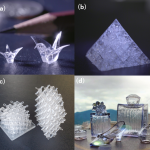
Advanced functional glass materials Fujino Laboratory
- S.Fujino(Prof.)
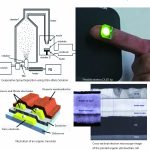
Organic Materials Chemistry Laboratory
- K.Fujita(Assoc.Prof.)
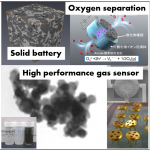
Theory of Functional Materials
- K.Shimanoe(Prof.)
- K.Watanabe(Assoc.Prof.)
- K.Suematsu(Asst.Prof.)
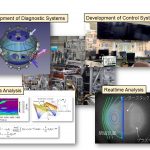
Fusion Plasma Physics & Control Eng.
- T.Ido(Prof.)
- M.Hasegawa(Asst.Prof.)
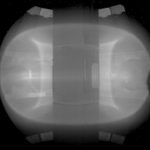
Advanced Plasma Science & Eng.
- H.Idei(Prof.)
- R.Ikezoe(Assoc.Prof.)

Thermal Science & Energy
- H.Watanabe(Prof.)
- R.Kai(Assoc.Prof.)
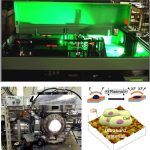
Ionized Gas Dynamics
- Y.Yamagata(Assoc.Prof.)
- K.Teii(Assoc.Prof.)
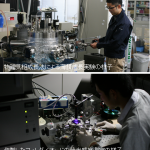
Electronic Physical Device Eng.
- T.Yoshitake(Prof.)
- H.Naragino(Asst.Prof.)
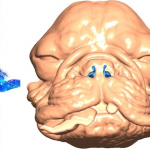
Architectural Environmental Eng.
- K.Ito(Prof.)
- K.Kuga(Asst.Prof.)
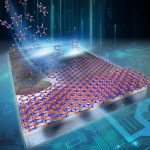
Advanced Nanomaterials Science
- H.Ago(Prof.)

Functional Materials & Characterization
- M.Arita(Assoc.Prof.)
- M.Aramaki(Asst.Prof.)
- Y.Ikoma(Asst.Prof.)
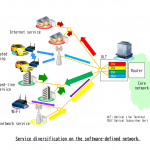
Optical communication systems laboratory
- S.Kimura(Prof.)
- K.AMILA(Asst.Prof.)
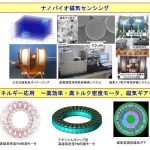
Applied Electromagnetic Energy
- T.Yoshida(Prof.)
- H.Sasa(Asst.Prof.)

Nano/Microsystem Packaging & Integration Lab
- R.Takigawa(Assoc.Prof.)
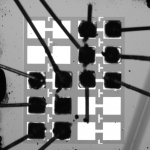
Constructive Electronics Group
- T.Yajima(Assoc.Prof.)
- S.Kawakami(Assoc.Prof.)
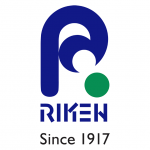
RIKEN Collaborative Section
- Y.Kim(Prof.)
- H.Imada(Assoc.Prof.)
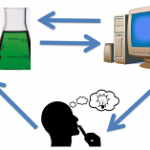
Statistical Learning Laboratory
- H.Saigo(Assoc.Prof.)
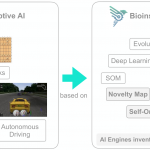
Laboratory of Intelligent Systems
- D.Vargas(Assoc.Prof.)
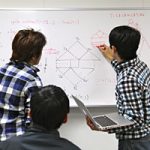
STRADS (String Algorithms & Data Structures)
- S.Inenaga(Prof.)
- Y.Nakashima(Asst.Prof.)
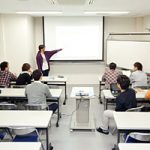
Mathematical Eng.
- J.Takeuchi(Prof.)
- Y.Jitsumatsu(Prof.)
- T.Hanaka(Assoc.Prof.)
- Y.Takeishi(Asst.Prof.)
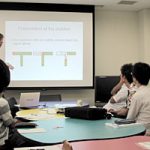
Theoretical Computer Science
- Y.Yamauchi(Prof.)
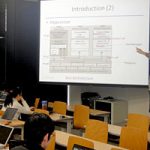
Artificial Intelligence & IT Security Laboratory
- K.Sakurai(Prof.)
- G.Yujie(Asst.Prof.)
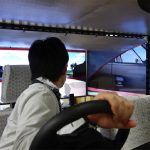
Cognitive Science
- S.Mori(Prof.)
- K.Shidoji(Prof.)
- H.Fujihira(Asst.Prof.)
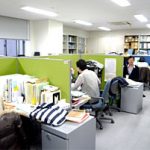
Data Mining
- E.Suzuki(Prof.)
- T.Matsukawa(Asst.Prof.)
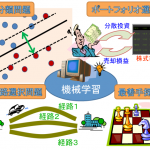
Machine Learning Theory
- E.Takimoto(Prof.)
- K.Hatano(Prof.)
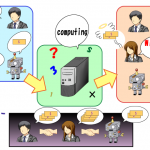
Multi-Agent Systems
- M.Yokoo(Prof.)
- T.Todo(Assoc.Prof.)
- K.Kimura(Assoc.Prof.)
- Z.Sun(Assoc.Prof.)
- M.Koshimura(Asst.Prof.)
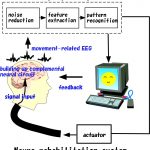
Neuroimaging & Neuroinformatics
- K.Iramina(Prof.)
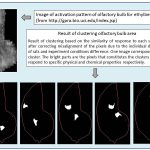
Natural Language Processing
- Y.Tomiura(Prof.)
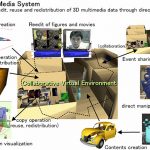
3D Multimedia Contents
- Y.Okada(Prof.)
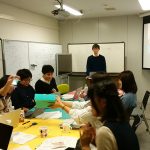
e-Science
- D.Ikeda(Assoc.Prof.)
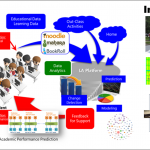
Image & Media Understanding
- A.Shimada(Prof.)
- F.Okubo(Assoc.Prof.)
- C.Tang(Asst.Prof.)
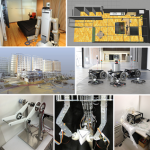
Real-world Informative Robotics
- R.Kurazume(Prof.)
- A.Kawamura(Assoc.Prof.)
- S.Miyauchi(Asst.Prof.)
- K.Nakashima(Asst.Prof.)
- K.Matsumoto(Asst.Prof.)
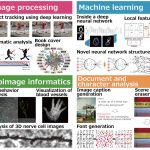
Human Interface
- S.Uchida(Prof.)
- R.Bise(Prof.)
- B.Iwana(Assoc.Prof.)
- D.Suehiro(Assoc.Prof.)
- K.Masai(Asst.Prof.)
- S.Toyota(Asst.Prof.)
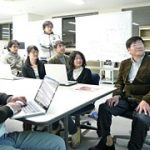
Principles of software engineering & programming languages
- Y.Kamei(Prof.)
- M.Kondo(Asst.Prof.)
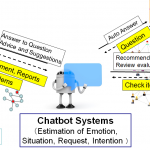
Human-centered Intelligence
- T.Mine(Assoc.Prof.)
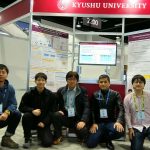
Advanced Network & Cybersecurity
- K.Okamura(Prof.)
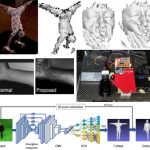
Computer Vision, Graphics & VR
- H.Kawasaki(Prof.)
- D.Thomas(Asst.Prof.)
- T.Iwaguchi(Asst.Prof.)
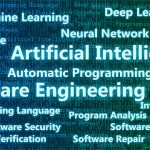
Intelligent Software Eng.
- J.Zhao(Prof.)
- Y.Feng(Asst.Prof.)
- Y.Omori(Asst.Prof.)

Wireless Communication
- O.Muta(Prof.)
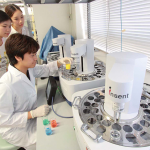
Kansei Nano-Biosensor
- T.Onodera(Assoc.Prof.)
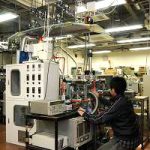
Plasma Eng.
- M.Shiratani(Prof.)
- K.Koga(Prof.)
- K.Kamataki(Assoc.Prof.)
- T.Okumura(Assoc.Prof.)
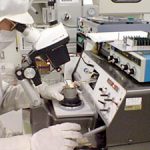
Integrated magnetic device
- T.Tanaka(Assoc.Prof.)
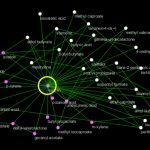
Organic Electronic Device
- K.Hayashi(Prof.)
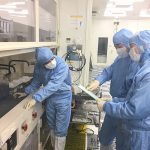
Spintronic Device
- H.Yuasa(Prof.)
- Y.Kurokawa(Asst.Prof.)
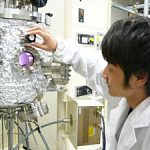
Electronic Materials & Devices
- N.Itagaki(Prof.)
- T.Ohshima(Assoc.Prof.)
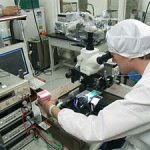
RFIC & Microwave Communication Device
- H.Kanaya(Prof.)
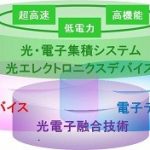
Optoelectronics integration system
- K.Kato(Prof.)
- Y.Mikami(Asst.Prof.)
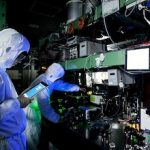
Micro / Nano Laser Device
- Y.Oki(Prof.)
- H.Yoshioka(Assoc.Prof.)
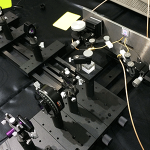
Applied Nano-photonic Computing
- N.Tate(Prof.)
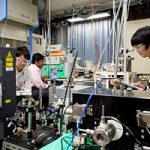
Laser
- D.Nakamura(Assoc.Prof.)
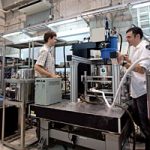
Superconductivity
- T.Kiss(Prof.)
- K.Higashikawa(Assoc.Prof.)
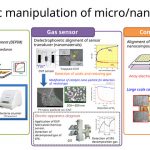
Applied Electrostatics
- J.Suehiro(Prof.)
- M.Nakano(Assoc.Prof.)
- M.Inaba(Asst.Prof.)
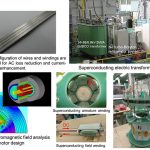
Applied Superconductivity
- M.Iwakuma(Prof.)
- H.miyazaki(Prof.)
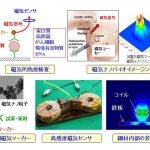
Advanced Magnetic Sensing System
- T.Sasayama(Assoc.Prof.)
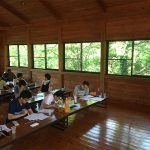
Cyber-Physical Computing
- K.Inoue(Prof.)
- M.Hirokawa(Prof.)
- T.Ono(Assoc.Prof.)
- T.Tanimoto(Assoc.Prof.)
- Y.Matsunaga(Assoc.Prof.)
- O.Chen(Assoc.Prof.)
- T.Hidaka(Asst.Prof.)
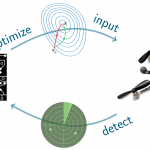
Control & Optimization
- K.Yamamoto(Assoc.Prof.)
- A.Themelis(Assoc.Prof.)
- A.Sakaguchi(Asst.Prof.)
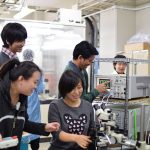
Opto-Electronics
- K.Hamamoto(Prof.)
- H.Jiang(Asst.Prof.)
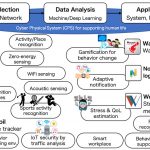
HumanoPhilic Systems
- Y.Arakawa(Prof.)
- Y.Nakamura(Asst.Prof.)
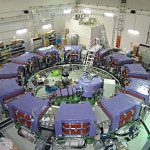
Applied Nuclear Physics & Electromagnetic Instrumentation
- N.Ikeda(Prof.)
- Y.Uozumi(Assoc.Prof.)
- H.Arima(Asst.Prof.)
- Y.Yonemura(Asst.Prof.)
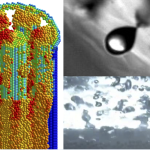
Nuclear Energy Systems
- K.Morita(Prof.)
- W.Liu(Prof.)
- T.Matsumoto(Asst.Prof.)
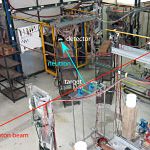
Radiation Physics & Measurement
- K.Watanabe(Prof.)
- N.Iyomoto(Assoc.Prof.)
- N.Shigyo(Asst.Prof.)

Nuclear Reactor Physics & Fusion Energy Science
- N.Fujimoto(Prof.)
- H.Matsuura(Assoc.Prof.)
- I.Simanullang(Asst.Prof.)
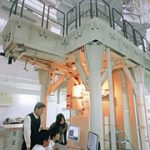
Radiation Induced Phenomena in Condensed Matter
- Y.Murakami(Prof.)
- K.Yasuda(Prof.)
- R.Aso(Assoc.Prof.)
- K.Sato(Assoc.Prof.)
- Y.Tomita(Asst.Prof.)

Nuclear Fuel Cycle Eng.
- Y.Inagaki(Assoc.Prof.)
- T.Arima(Asst.Prof.)
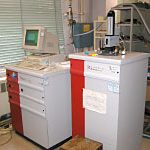
Condensed Matter Physics
- S.Tanaka(Prof.)
- T.Kawae(Assoc.Prof.)
- A.Visikovskiy(Asst.Prof.)
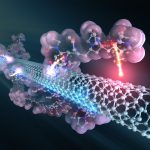
Applied Physics
- K.Ishida(Prof.)
- K.Goushi(Assoc.Prof.)
- Y.Hidaka(Asst.Prof.)
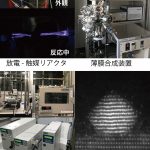
Functional Inorganic Materials Chemistry
- H.Einaga(Prof.)
- H.Hojo(Assoc.Prof.)

Molecular Spectroscopy
- A.Harata(Prof.)
- T.Ishioka(Asst.Prof.)
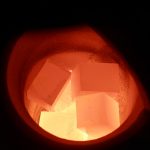
Structural Materials Science
- M.Mitsuhara(Prof.)
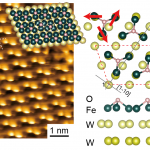
Surface Science
- T.Nakagawa(Assoc.Prof.)
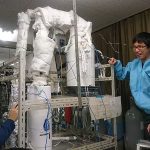
Energy Chemical Eng.
- K.Katayama(Assoc.Prof.)
- M.Oya(Asst.Prof.)
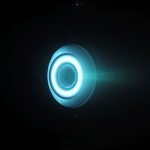
Advanced Space Propulsion
- N.Yamamoto(Prof.)
- T.Morita(Asst.Prof.)
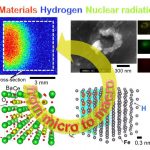
Materials Science under Severe Conditions
- K.Hashizume(Assoc.Prof.)
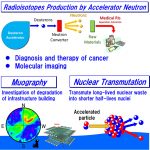
Nuclear & Radiation Eng. Physics
- Y.Watanabe(Prof.)
- S.Kawase(Asst.Prof.)
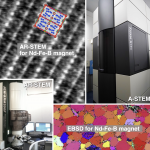
Crystal Physics & Eng.
- M.Itakura(Assoc.Prof.)

Architectural History
- Y.Hori(Prof.)
- T.Kijima(Asst.Prof.)
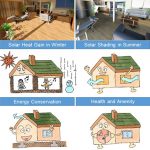
Healthy Building Environment
- A.Ozaki(Prof.)
- C.Younhee(Assoc.Prof.)
- Y.Arima(Asst.Prof.)
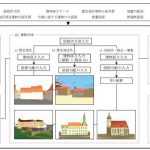
Urban Planning
- Z.Shichen(Prof.)
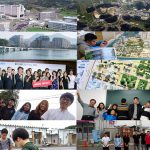
Public Space Planning
- T.Sakai(Prof.)
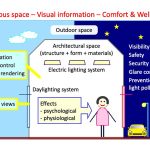
Architectural Lighting Laboratory
- Y.Koga(Assoc.Prof.)
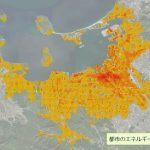
Sustainable Building Energy Systems
- D.Sumiyoshi(Prof.)
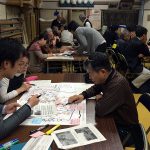
Sustainable Residential Planning
- T.Shiga(Assoc.Prof.)

Urban Design
- T.Kurose(Prof.)
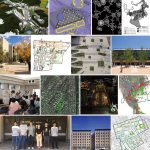
Regional Regeneration Design
- N.Tsurusaki(Assoc.Prof.)
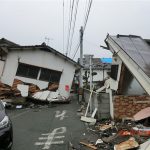
Urban Environment Risk Systems
- T.Kanno(Prof.)
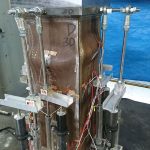
Building Construction
- T.Ninakawa(Prof.)
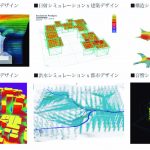
Architectural Design Eng.
- H.Suemitsu(Assoc.Prof.)
- B.Izumi(Assoc.Prof.)
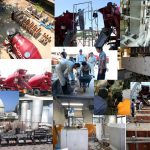
Construction Materials
- T.Koyama(Assoc.Prof.)
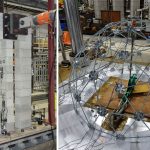
Sustainable Building Structure Laboratory
- K.Yamaguchi(Prof.)
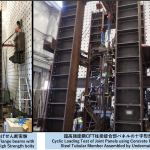
Sustainable Earthquake Resistant Structure
- S.Matsuo(Assoc.Prof.)
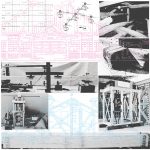
Timber Structure
- T.Sato(Assoc.Prof.)
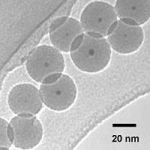
Reaction Process Eng.
- M.Kishida(Prof.)
- T.Yamamoto(Assoc.Prof.)
- K.Oshima(Asst.Prof.)
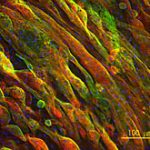
Biochemical Eng. & Biotechnology
- M.Kamihira(Prof.)
- Y.Kawabe(Assoc.Prof.)
- H.Mizumoto(Assoc.Prof.)
- N.Shirakigawa(Asst.Prof.)

Fluid Process Eng.
- T.Watanabe(Prof.)
- M.Tanaka(Assoc.Prof.)
- T.Yamamoto(Assoc.Prof.)
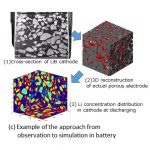
Process Systems Eng.
- G.Inoue(Prof.)
- S.Asano(Assoc.Prof.)
- Y.Nakayama(Assoc.Prof.)
- T.Yano(Asst.Prof.)
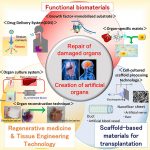
Biomaterials / Medical Eng.
- H.Ijima(Prof.)
- Y.Sakai(Assoc.Prof.)
- Y.Ikegami(Asst.Prof.)
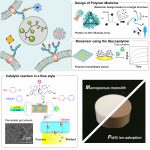
Biofunctional Materials Eng.
- Y.Miura(Prof.)
- M.Nagao(Asst.Prof.)
- H.Matsumoto(Asst.Prof.)
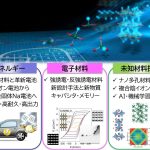
Applied Inorganic Chemistry
- K.Hayashi(Prof.)
- H.Akamatsu(Assoc.Prof.)
- W.Jian(Asst.Prof.)
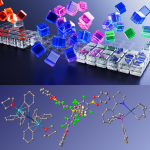
Organic Functional Molecular Chemistry
- T.Iwasaki(Prof.)
- S.Shimizu(Assoc.Prof.)
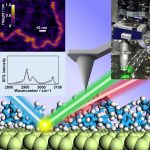
Functional Systems Chemistry
- K.Tanaka(Prof.)
- Y.Morimitsu(Asst.Prof.)
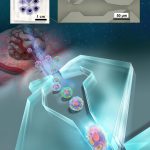
Applied Analytical Chemistry
- N.Kaji(Prof.)
- S.Zaitsu(Assoc.Prof.)
- I.Leong(Asst.Prof.)
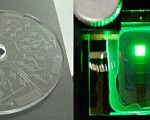
Chemical Environment Eng.
- K.Nakano(Assoc.Prof.)
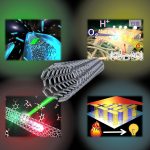
Advanced Nanomaterials Chemistry
- T.Fujigaya(Prof.)
- T.Shiraki(Assoc.Prof.)
- N.Tanaka(Asst.Prof.)

Biochemical Eng.
- M.Goto(Prof.)
- N.Kamiya(Prof.)
- R.Wakabayashi(Assoc.Prof.)
- Y.Kawaguchi(Asst.Prof.)
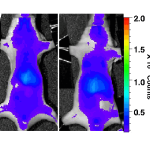
Artificial Enzyme Chemistry
- Y.Hoshino(Prof.)
- H.Shimakoshi(Prof.)
- T.Ono(Assoc.Prof.)
- Y.Nagai(Asst.Prof.)

Green Chemistry
- S.Ogo(Prof.)
- T.Matsumoto(Assoc.Prof.)
- T.Yatabe(Asst.Prof.)
- T.Koide(Asst.Prof.)

Chemistry for Molecular Systems
- R.Kubota(Prof.)
- Y.Sasaki(Assoc.Prof.)
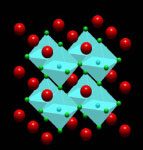
Functional Material Eng.
- T.Ishihara(Prof.)
- M.Inada(Assoc.Prof.)
- J.Song(Asst.Prof.)

Biomedical & Biomaterial Chemistry
- T.Mori(Prof.)
- A.Kishimura(Assoc.Prof.)
- N.Teruki(Asst.Prof.)
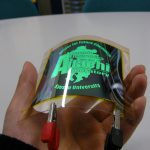
Organic Optoelectronics
- C.Adachi(Prof.)
- Y.Chitose(Asst.Prof.)
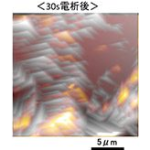
Electrochemistry for Materials Processing
- H.Nakano(Prof.)
- Y.Taninouchi(Prof.)
- S.Oue(Asst.Prof.)

Physical Chemistry of High-Temperature Melts
- N.Saito(Prof.)
- T.Sumita(Asst.Prof.)

Crystal Plasticity & Fracture / Strong Solids Group
- M.Tanaka(Prof.)
- S.Yamasaki(Assoc.Prof.)
- T.Morikawa(Asst.Prof.)
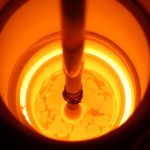
Functional Materials
- S.Munetoh(Prof.)
- R.Saeki(Asst.Prof.)
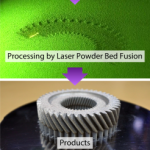
Composite Material Processing
- H.Miyahara(Prof.)
- K.Morishita(Prof.)
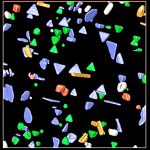
Materials Characterization
- K.Kaneko(Prof.)
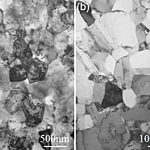
Structural Materials
- T.Tsuchiyama(Prof.)
- T.Masumura(Assoc.Prof.)
- Y.Kawahara(Asst.Prof.)
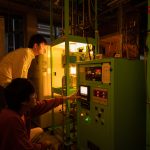
Reaction Control & Processing for Materials
- K.Ohno(Prof.)
- T.Kon(Asst.Prof.)
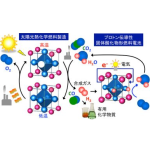
Energy Materials Eng.
- Y.Yamazaki(Prof.)
- S.Fujii(Assoc.Prof.)
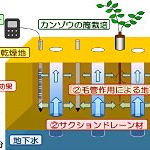
Geotechnical Eng.
- R.Ishikura(Assoc.Prof.)
- A.Alowaisy(Asst.Prof.)
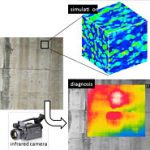
Structural Analysis
- Y.Sonoda(Prof.)
- M.Asai(Assoc.Prof.)
- C.Lu(Asst.Prof.)
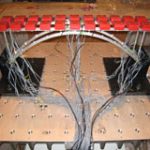
Earthquake Eng.
- Y.Kajita(Prof.)

Structural Design
- S.Kainuma(Prof.)
- Y.Sagawa(Assoc.Prof.)
- M.YANG(Assoc.Prof.)
- A.KIM(Asst.Prof.)
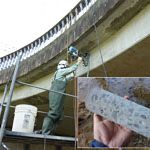
Concrete Eng.
- H.Hamada(Prof.)
- T.Fukunaga(Asst.Prof.)

Geodisaster Prevention
- K.Kasama(Prof.)
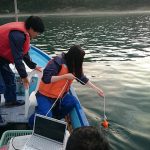
Environmental Fluid Mechanics
- S.Yano(Prof.)
- Y.Maruya(Assoc.Prof.)
- R.Itsukushima(Assoc.Prof.)
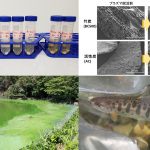
Urban & Environmental Eng.
- T.Kuba(Prof.)
- M.Fujibayashi(Assoc.Prof.)
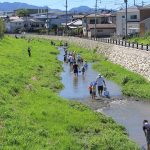
Watershed Management
- H.Hayashi(Assoc.Prof.)
- H.Takata(Asst.Prof.)
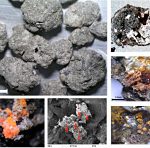
Material Cycle & Waste Management Eng.
- H.Nakayama(Prof.)
- T.Komiya(Asst.Prof.)
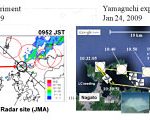
Hydrosphere Environmental Eng.
- Y.Hiroshiro(Assoc.Prof.)
- L.Nofel(Assoc.Prof.)
- K.Nishiyama(Asst.Prof.)
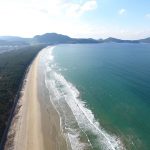
Ecological Eng.
- S.Seino(Assoc.Prof.)
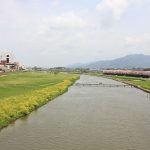
Environmental Planning & Design
- A.Higuchi(Assoc.Prof.)
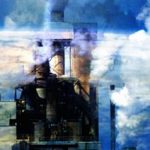
Urban & Transportation Eng.
- S.Managi(Prof.)
- Y.Oeda(Assoc.Prof.)
- A.Keeley(Assoc.Prof.)
- S.Yoo(Assoc.Prof.)
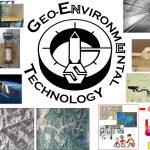
Geoenvironmental System Eng.
- Y.Mitani(Prof.)
- H.Honda(Asst.Prof.)
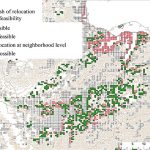
Land Use Policy & Disaster Risk Reduction
- K.Tsukahara(Prof.)
- T.Sato(Assoc.Prof.)
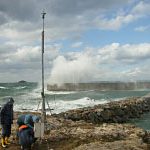
Coastal & Ocean Eng.
- M.Yamashiro(Prof.)
- Y.Ide(Asst.Prof.)
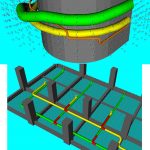
Systems Planning
- H.Kimura(Prof.)
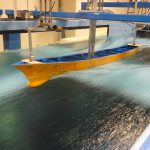
Marine Hydrodynamics
- J.Ando(Prof.)
- T.Kanemaru(Assoc.Prof.)
- A.Yoshitake(Asst.Prof.)
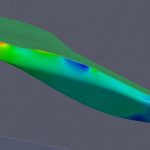
Marine Dynamics & Control
- Y.Furukawa(Prof.)
- H.Ibaragi(Asst.Prof.)
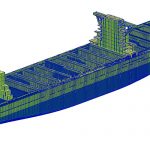
Structural Systems Eng.
- D.Yanagihara(Prof.)
- K.To(Asst.Prof.)
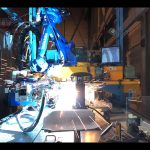
Fatigue, Fracture, Welding Mechanics & Production Systems
- K.Gotoh(Prof.)
- K.Matsuda(Assoc.Prof.)
- Y.Okubo(Asst.Prof.)
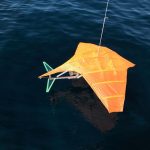
Ship Design & Maritime Intelligence Technology
- S.Yamaguchi(Assoc.Prof.)
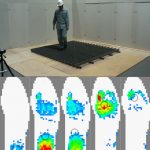
Functional Systems Eng.
- T.Tanaka(Assoc.Prof.)
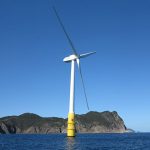
Ocean Energy Resources
- T.Utsunomiya(Prof.)
- R.Hisamatsu(Asst.Prof.)

Economic Geology
- A.Imai(Prof.)
- K.Yonezu(Assoc.Prof.)
- A.Ito(Asst.Prof.)
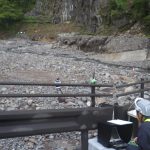
Exploration Geophysics
- Y.Mitsuhata(Prof.)
- H.Mizunaga(Assoc.Prof.)
- T.Ikeda(Assoc.Prof.)
- T.Tanaka(Asst.Prof.)
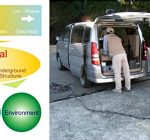
Geothermics
- Y.Fujimitsu(Prof.)
- J.Nishijima(Assoc.Prof.)
- K.Kitamura(Assoc.Prof.)
- M.Matsumoto(Assoc.Prof.)
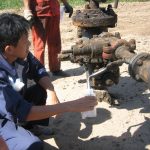
Resources Production & Safety
- Y.Sugai(Prof.)
- T.Esaki(Assoc.Prof.)
- T.Tambaria(Asst.Prof.)

Rock Eng. & Mining Machinery
- H.Shimada(Prof.)
- T.Sasaoka(Assoc.Prof.)
- A.Hamanaka(Assoc.Prof.)

Mineral Processing, Recycling & Environmental Remediation Lab.
- N.Okibe(Prof.)
- H.Miki(Assoc.Prof.)
- G.Suyantara(Assoc.Prof.)
- K.Oyama(Asst.Prof.)

Energy Resources Eng. Laboratory
- Y.Yamada(Prof.)
- K.Egawa(Assoc.Prof.)
- K.Ishizu(Asst.Prof.)
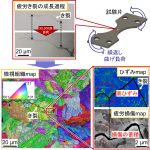
Solid Mechanics
- S.Hamada(Prof.)
- T.Kondo(Assoc.Prof.)
- S.Ueki(Asst.Prof.)
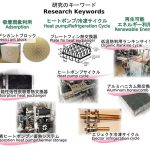
Thermal Energy Conversion System
- T.Miyazaki(Prof.)
- K.Thu(Assoc.Prof.)
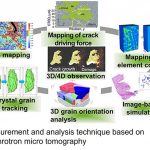
Structural Materials Research
- H.Toda(Prof.)
- O.Takakuwa(Assoc.Prof.)
- H.Fujihara(Asst.Prof.)
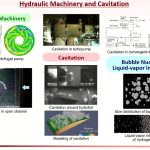
Flow Control Systems
- S.Watanabe(Prof.)
- S.Tsuda(Assoc.Prof.)
- T.Takamine(Asst.Prof.)
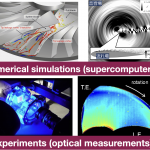
Fluids Eng. Design Laboratory
- K.Shimoyama(Prof.)
- H.Mori(Assoc.Prof.)
- K.Kusano(Asst.Prof.)
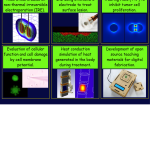
Biothermal Eng. Laboratory
- K.Kurata(Prof.)
- K.Jeonghyun(Assoc.Prof.)
- K.Kawai(Asst.Prof.)
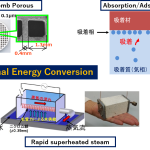
Thermal Energy Conversion
- S.Mori(Prof.)
- Y.Hamamoto(Assoc.Prof.)
- Y.Umehara(Asst.Prof.)
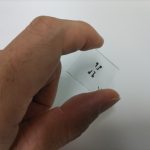
Thermofluid Physics
- K.Miyazaki(Prof.)
- K.Hashikuni(Asst.Prof.)
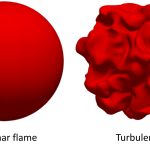
Reactive Gas Dynamics
- T.Kitagawa(Prof.)
- E.Okafor(Assoc.Prof.)
- D.Matsuda(Asst.Prof.)

Thermal Physics & Eng.
- M.Kohno(Prof.)
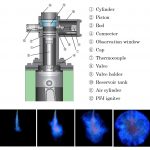
Engine Systems
- O.Moriue(Prof.)
- S.Ando(Assoc.Prof.)

Vibration & Acoustics
- S.Kijimoto(Prof.)
- S.Ishikawa(Assoc.Prof.)
- A.Yonezawa(Asst.Prof.)
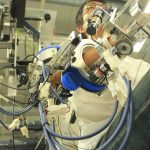
System Eng.
- K.Kiguchi(Prof.)
- S.Nishikawa(Assoc.Prof.)
- Y.Tsuji(Asst.Prof.)
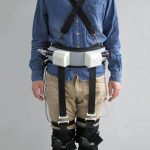
Systems Control
- M.Yamamoto(Prof.)
- Y.Nakashima(Assoc.Prof.)
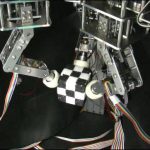
Human-Centered Robotics
- K.Tahara(Prof.)
- H.Arita(Assoc.Prof.)
- K.Nakashima(Assoc.Prof.)

Precision Machining
- S.Kurokawa(Prof.)
- T.Hayashi(Assoc.Prof.)
- K.Osawa(Asst.Prof.)
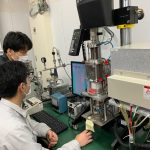
Material Processing
- K.Shinagawa(Prof.)
- N.Yodoshi(Assoc.Prof.)
- K.Kudo(Asst.Prof.)
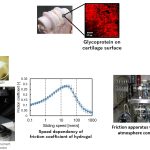
Machine Elements & Design Eng.
- Y.Sawae(Prof.)
- S.Yarimitsu(Assoc.Prof.)
- H.Shinmori(Asst.Prof.)

Tribology
- K.Yagi(Prof.)
- S.Kawada(Assoc.Prof.)
- H.Tanaka(Asst.Prof.)
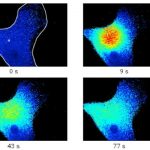
Biofunctional Eng.
- S.Kudo(Prof.)
- N.Takeishi(Assoc.Prof.)
- S.Sasaki(Asst.Prof.)
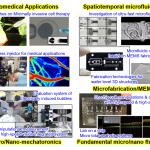
Bio-medical Fluid Eng.
- Y.Yamanishi(Prof.)
- S.Sakuma(Assoc.Prof.)
- N.Tottori(Asst.Prof.)

Advanced Medical Devices
- J.Arata(Prof.)
- D.D.S.V.Bandara(Asst.Prof.)

Hydrogen Utilization Processes
- K.Sasaki(Prof.)
- Y.Tachikawa(Assoc.Prof.)
- M.Yasutake(Asst.Prof.)
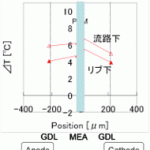
Fuel Cell System
- K.Ito(Prof.)
- T.Kitahara(Assoc.Prof.)

Hydrogen Storage Systems
- H.Matsunaga(Prof.)
- P.Sungcheol(Asst.Prof.)
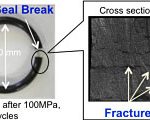
Advanced Hydrogen Materials
- S.Nishimura(Prof.)
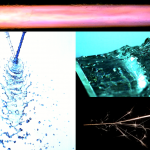
Inoue Lab (Aerospace Propulsion)
- C.Inoue(Assoc.Prof.)
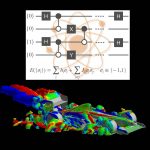
Abe/Kuya Lab (Fluid Mechanics)
- K.Abe(Prof.)
- Y.Kuya(Assoc.Prof.)
- H.Kihara(Asst.Prof.)
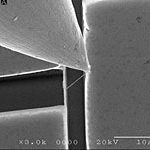
Takahashi/Li/Teshima Lab (Aerospace Applied Physics)
- K.Takahashi(Prof.)
- Q.Li(Assoc.Prof.)
- H.Teshima(Assoc.Prof.)

Yashiro Lab (Aerospace Structural Systems Eng.)
- S.Yashiro(Prof.)
- S.Onodera(Asst.Prof.)
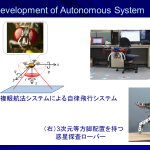
Hokamoto/Bando Lab (Guidance & Control)
- S.Hokamoto(Prof.)
- M.Bando(Prof.)
- S.Nagasaki(Asst.Prof.)
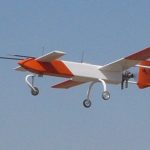
Higashino/Harada Lab (Flight Dynamics)
- S.Higashino(Prof.)
- A.Harada(Assoc.Prof.)

Hanada (Space Systems Dynamics) Laboratory
- T.Hanada(Prof.)
- Y.Shinmoto(Asst.Prof.)
- Y.Yoshimura(Asst.Prof.)

